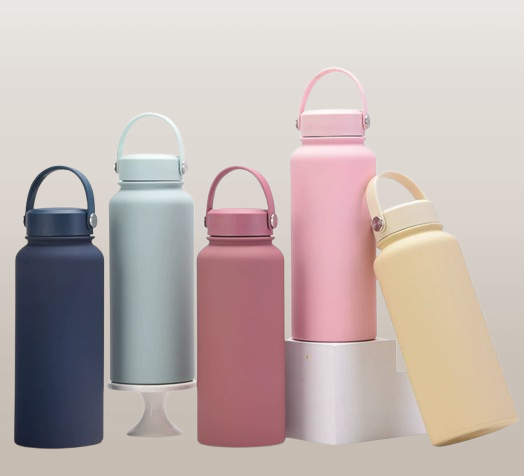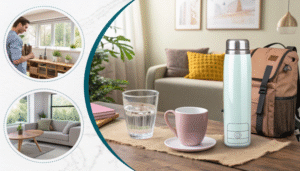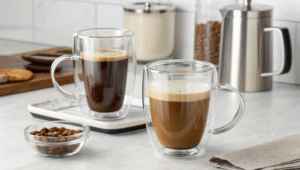You buy an expensive stainless steel bottle that promises ice-cold water for 24 hours. But by midday, your water is disappointingly lukewarm, and the bottle is covered in condensation.
Yes, double-wall stainless steel bottles work incredibly well, but only when they are vacuum-insulated. This technology creates a void between the walls that stops heat transfer, keeping your drinks hot or cold for hours, far longer than any other type of bottle.
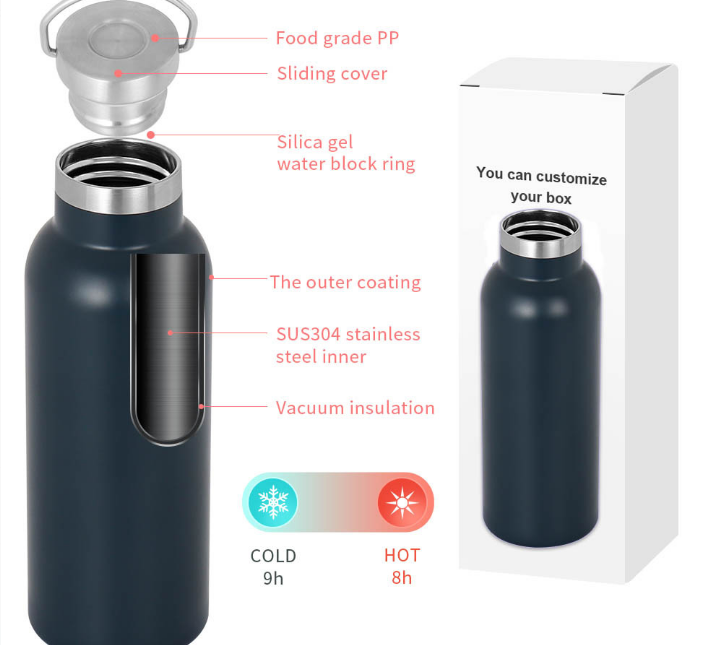
When I first started in this industry, I was on the factory floor, feeling the heat from the machines that pressed and formed metal. I was skeptical of the big claims I saw on packaging. Then, a client asked me to source bottles that could keep a drink cold during a multi-day outdoor festival. We tested dozens of options, and I saw the magic of vacuum insulation firsthand. The properly made bottles performed exactly as promised. It's not marketing hype; it's pure physics.
How Do Double Walled Bottles Work?
You hear terms like "vacuum insulated" and "double-walled," but it just sounds like fancy marketing. You do not really understand what is happening inside the bottle to keep your coffee so hot.
Double-walled bottles work by creating a space between an inner and an outer wall of stainless steel. During manufacturing, all the air is removed from this space to create a vacuum. This vacuum acts as a powerful barrier, preventing heat transfer.

Let's break down the science, which is what I explain to designers like Emma who need to know why one bottle costs more than another. Heat moves in three ways: conduction, convection, and radiation. A vacuum-insulated bottle is engineered to defeat all three. Conduction is heat transfer through direct touch. Since there is almost nothing in the vacuum, heat cannot pass from the outer wall to the inner wall. Convection is heat transfer through the movement of air. Again, with no air, there can be no convection. The vacuum stops both of these cold. Finally, the best bottles add a third trick. They often have a copper coating on the inside of the outer wall. This layer helps to reflect thermal radiation, bouncing heat back into your drink, or away from it, providing that last bit of performance.
How a Vacuum Bottle Stops Heat
| Heat Transfer Type | How It's Stopped | Why It Works |
|---|---|---|
| Conduction | The Vacuum Space | Heat can't travel through nothing. The inner and outer walls don't touch. |
| Convection | The Vacuum Space | Heat can't be carried by air currents if there is no air. |
| Radiation | Reflective Inner Layer | A shiny surface (like copper) reflects heat waves back to where they came from. |
What are the Disadvantages of a Stainless Steel Water Bottle?
You love that your stainless steel bottle keeps your water cold all day. But it is heavy to carry around, and you are terrified of dropping it and seeing a big, ugly dent.
The primary disadvantages are their weight compared to plastic, their susceptibility to dents that can ruin the insulation, a potential for a slight metallic taste for sensitive users, and lids that can be complex and hard to clean thoroughly.
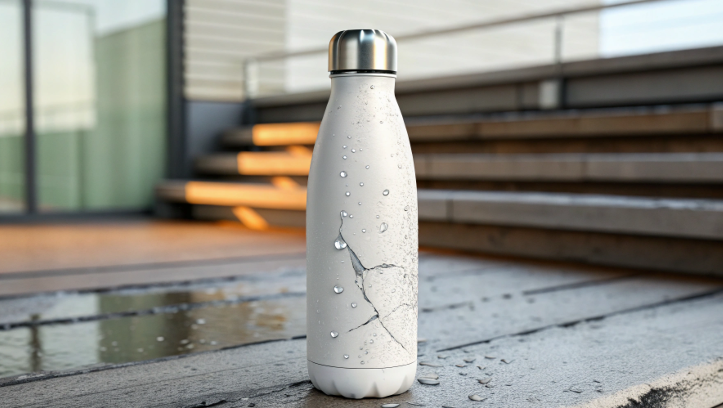
As someone who sells these products, I believe in being honest about their limits. Their biggest strength—the double-wall construction—is also the source of their weakness. All that steel and the vacuum space make them significantly heavier than a plastic alternative. Another major issue is denting. We have all done it. A hard drop can dent the outer wall. If the dent is bad enough to make the outer wall touch the inner wall, you have created a "thermal bridge." Heat can now conduct directly across that point, and your bottle's insulation is completely ruined. It becomes just a heavy, normal bottle. Cheaper bottles are also more likely to have a metallic taste, although high-quality 18/8 food-grade steel minimizes this. Finally, all those amazing leak-proof lids with spouts and straws have tiny parts that can be a real pain to clean if you don't have the right brushes.
Is a Double Wall Water Bottle Better Than Triple Wall?
You see bottles advertised as "triple-wall insulated," and you assume more walls must mean better performance. You are tempted to spend more money, but you worry you might just be paying for a marketing gimmick.
"Triple wall" is mostly a marketing term for a standard double-wall bottle that includes a copper layer. This copper coating improves performance slightly by reducing heat radiation, but there is no actual third physical wall. Double-wall with a vacuum remains the core technology.

This is a question I get from clients all the time when we are developing a new product line. They want to know if "triple wall" is worth the extra manufacturing cost. The truth is, it's a bit of clever wording. The so-called third wall is not a structural wall of steel. It is a super-thin layer of copper plated onto the inner wall (inside the vacuum area). Does it do anything? Yes. It improves the bottle's ability to resist thermal radiation, adding an extra hour or two of performance. It is a genuine feature that works. However, calling it a "triple wall" can be misleading. It gives the impression of a whole other layer of steel, which is not the case. The real workhorse is the double-wall vacuum. The copper layer is a premium add-on that makes a great product even better.
Double-Wall vs. "Triple-Wall"
| Feature | Standard Double-Wall | "Triple-Wall" (Copper-Lined) |
|---|---|---|
| Core Technology | Two steel walls with a vacuum | Two steel walls with a vacuum |
| Radiation Shield | Natural reflectivity of steel | Added copper layer for high reflectivity |
| Performance | Excellent (e.g., cold for 20 hours) | Exceptional (e.g., cold for 24 hours) |
| Marketing Angle | The industry standard for performance | Marketed as a premium, superior technology |
Is it Healthy to Drink Out of Stainless Steel Bottles?
You hear so many warnings about chemicals in plastics. You switched to stainless steel hoping it was a safer choice, but you still have a small, nagging doubt about drinking from metal every day.
Yes, drinking from a high-quality stainless steel bottle is one of the healthiest and safest options. Food-grade 18/8 stainless steel is non-reactive, stable, and does not leach chemicals like plastics or require a liner like aluminum bottles.
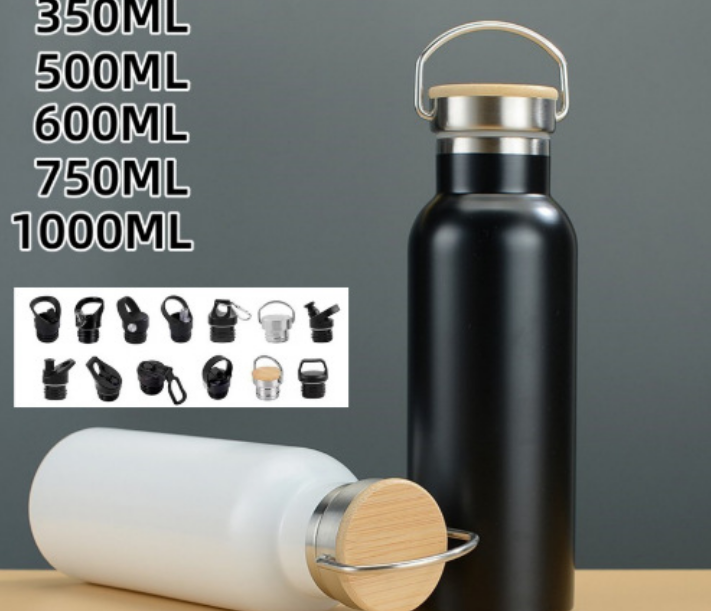
Safety is my number one priority. I will never put a customer's logo on an unsafe product. That's why I exclusively work with food-grade 18/8 stainless steel. The "18/8" means it is made with 18% chromium and 8% nickel. These elements make the steel highly resistant to rust and corrosion. Most importantly, the material is inert. It doesn't react with your drinks, so it won't absorb old flavors or leach anything into your water, coffee, or juice. This is a huge advantage over some plastics, which can contain BPA or other chemicals that can leach over time. It is also better than aluminum bottles, which are not corrosion-resistant on their own and must have an internal plastic liner that can get scratched or degrade. With high-quality stainless steel, the material itself is the protector. The drink only touches pure, stable steel.
Conclusion
Double-wall vacuum-insulated bottles are highly effective at keeping drinks hot or cold. They are a durable and extremely healthy choice, far superior to plastic for safety and performance.
